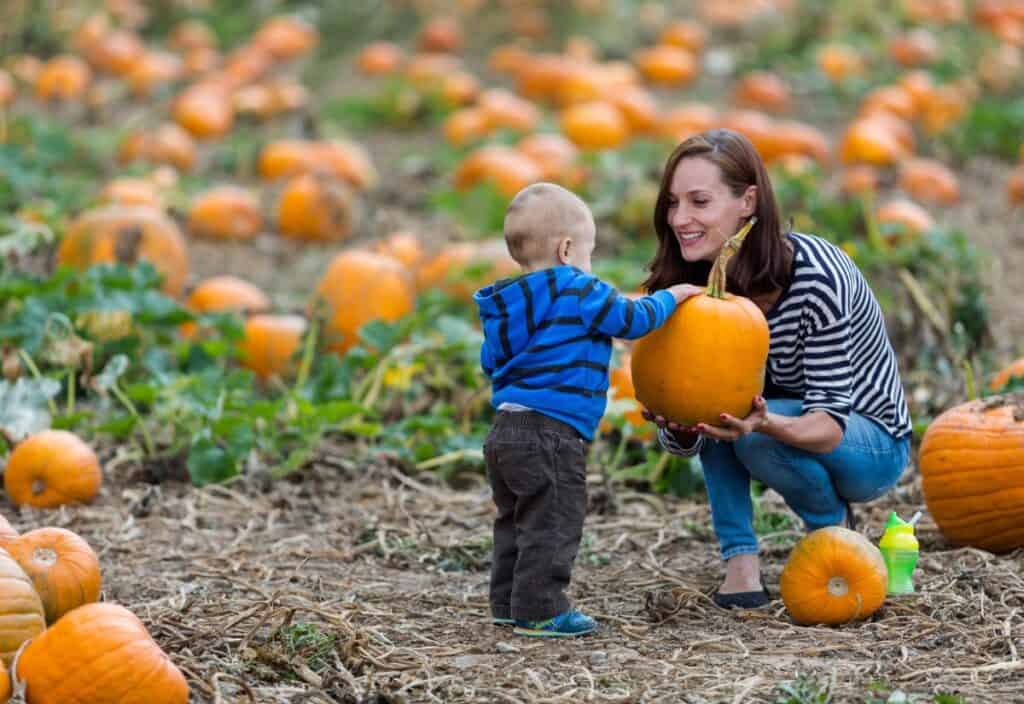There is something undeniable about a day at the pumpkin patch: The crunch of leaves underfoot, the children laughing as their parents try to capture the joyful chaos with pictures. But beyond the Instagram-worthy moments, there’s a deeper reason you return to the patches year after year.

Pumpkin patches offer a wholesome escape from daily routine, blending nature, tradition and community. Though photo ops have their place in this autumn festivity, the true appeal is in the deeper emotional and psychological connections that keep you coming back.
The psychology of the pumpkin patch
While the pumpkin patch seems like a simple way to spend a fall afternoon, its appeal runs deeper, offering tangible benefits to your mental and emotional well-being that have you returning to the pumpkin patch yearly. Surrounded by nature, families can slow down and take a break from the urban hustle. According to the American Psychological Association, spending time outdoors can lower stress levels, reduce anxiety and boost your mood. For children especially, spending time outdoors offers a hands-on way to connect with the environment and foster a deeper appreciation for nature.
Pumpkin patches also tap into a powerful sense of tradition. For many families, visiting a pumpkin patch is an annual ritual that has been passed down for many generations. This nostalgia does not just linger in your past; it becomes an essential part of your present. As parents, you naturally seek to share these same cherished traditions with your children. According to Scientific American, sharing these nostalgic experiences strengthens connection with others, and this is why visiting the pumpkin patch with your family becomes an activity that promotes bonding and reinforces emotional ties.
Fall rituals and the rise of the pumpkin craze
Pumpkins have been associated with fall for centuries, but recent cultural trends have propelled them even further to the forefront of seasonal celebrations. Looking to the past, pumpkins, which are native to North America, symbolized the harvest season. Ancient harvest festivals like Samhain laid the groundwork for modern celebrations like Halloween and Thanksgiving, which continue to focus on pumpkins. Indeed, these ancient festivals were a time for people to gather, reflect and celebrate, notes English Heritage.
Today, pumpkins have exploded as modern cultural icons, driven in part by the pumpkin spice craze. What started as a seasonal coffee flavor and pumpkin pies and cakes, has transformed into an all-out cultural obsession, accounting for over $500 million in annual sales in the U.S., reports BBC. This phenomenon extends beyond food, where pumpkins are a cultural signal that fall has arrived.
Widespread enthusiasm keeps pumpkin patches thriving as they offer the ideal backdrop for seasonal activities. Pumpkin patches perfectly blend the values of ancient harvest festivals and the continued symbolism of the pumpkin. They offer a space for families to bond and create lasting memories that are deeply associated with historical fall rituals like Thanksgiving feasts with turkey and all the fixings.
Agritourism and local economies
Pumpkin patches have become vital in supporting local economies through agritourism. What was once only a means to sell pumpkins has become an immersive experience. For many visitors, this level of involvement creates a personal connection to the land and the farmers who maintain it. It inspires a greater sense of responsibility toward supporting sustainable farming methods and the local economy. In this way, agritourism boosts local economies and also provides farmers with a reliable source of income beyond the growing season.
In addition to supporting local economies, pumpkin patches also contribute positively to the sustainability movement. Pumpkin farms often practice crop rotation and organic farming methods to keep the land healthy for future harvests. According to the Australian Children’s Education & Care Quality Authority, engaging with sustainable practices and helping children understand their importance fosters a deeper appreciation for environmental preservation from a young age. This helps to inspire the next generation of environmentally conscious consumers who connect with seasonal traditions through mindful practices.
The modern pumpkin patch experience
Today’s pumpkin patches have come a long way since their inception. They have evolved into full-fledged fall festivals offering a range of activities for families to enjoy. Regions known for their vibrant fall activities, like New England, the Midwest and the Pacific Northwest, offer some of the most impressive pumpkin patches, with many becoming annual must-visit destinations. In these areas, pumpkin patches celebrate autumn in its entirety.
Families can now spend a whole day at the pumpkin patch, with activities that cater to visitors of all ages. For kids, pumpkin patches offer excitement through corn mazes, bounce houses and hayrides. These interactive activities allow children to explore and exercise their imagination while immersed in fall-themed fun. For adults, cider tastings and local food stalls selling all things pumpkin, like pumpkin brownies and artisanal crafts, promise to keep you engaged. With something for everyone, you leave the pumpkin patch with a sense of fulfillment and anticipation for your next visit.
Embracing the full pumpkin patch experience
Visiting a pumpkin patch is more than an outing, it is a way to connect with nature, explore your traditions and support your local economies. From hayrides to cider tastings, pumpkin patches offer an unforgettable fall experience for everyone that goes beyond a simple photo op.
As fall comes into full swing, why not embrace the full pumpkin patch experience? Explore your local farm directories or use sites like Pumpkin Patches and More to easily discover patches near you. So head out with your family, enjoy the crisp fall air and create lasting memories.
Jennifer Allen is a retired professional chef and long-time writer. Her writing appears in dozens of publications, and she has two cookbooks, “Keto Soup Cookbook” and “Keto Diabetic Cookbook and Meal Plan.” These days, she’s busy in the kitchen, developing recipes for various publications and traveling, and you can find all her best recipes at DinnerBySix.com.